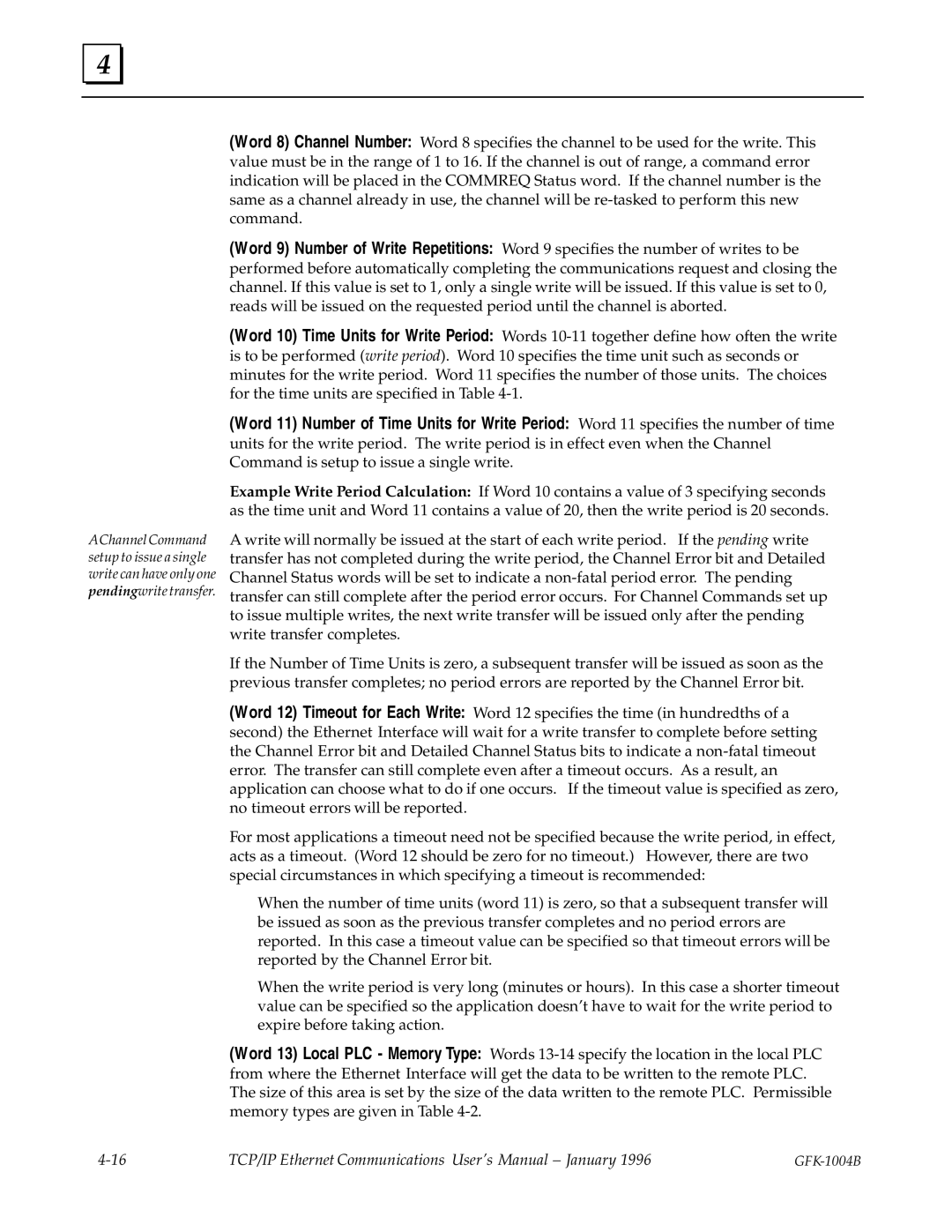4 |
AChannel Command setup to issue a single write can have only one pendingwrite transfer.
(Word 8) Channel Number: Word 8 specifies the channel to be used for the write. This value must be in the range of 1 to 16. If the channel is out of range, a command error indication will be placed in the COMMREQ Status word. If the channel number is the same as a channel already in use, the channel will be
(Word 9) Number of Write Repetitions: Word 9 specifies the number of writes to be performed before automatically completing the communications request and closing the channel. If this value is set to 1, only a single write will be issued. If this value is set to 0, reads will be issued on the requested period until the channel is aborted.
(Word 10) Time Units for Write Period: Words
(Word 11) Number of Time Units for Write Period: Word 11 specifies the number of time units for the write period. The write period is in effect even when the Channel Command is setup to issue a single write.
Example Write Period Calculation: If Word 10 contains a value of 3 specifying seconds as the time unit and Word 11 contains a value of 20, then the write period is 20 seconds.
A write will normally be issued at the start of each write period. If the pending write transfer has not completed during the write period, the Channel Error bit and Detailed Channel Status words will be set to indicate a
If the Number of Time Units is zero, a subsequent transfer will be issued as soon as the previous transfer completes; no period errors are reported by the Channel Error bit.
(Word 12) Timeout for Each Write: Word 12 specifies the time (in hundredths of a second) the Ethernet Interface will wait for a write transfer to complete before setting the Channel Error bit and Detailed Channel Status bits to indicate a
For most applications a timeout need not be specified because the write period, in effect, acts as a timeout. (Word 12 should be zero for no timeout.) However, there are two special circumstances in which specifying a timeout is recommended:
HWhen the number of time units (word 11) is zero, so that a subsequent transfer will be issued as soon as the previous transfer completes and no period errors are reported. In this case a timeout value can be specified so that timeout errors will be reported by the Channel Error bit.
HWhen the write period is very long (minutes or hours). In this case a shorter timeout value can be specified so the application doesn't have to wait for the write period to expire before taking action.
(Word 13) Local PLC - Memory Type: Words
TCP/IP Ethernet Communications User's Manual ± January 1996 |
|
